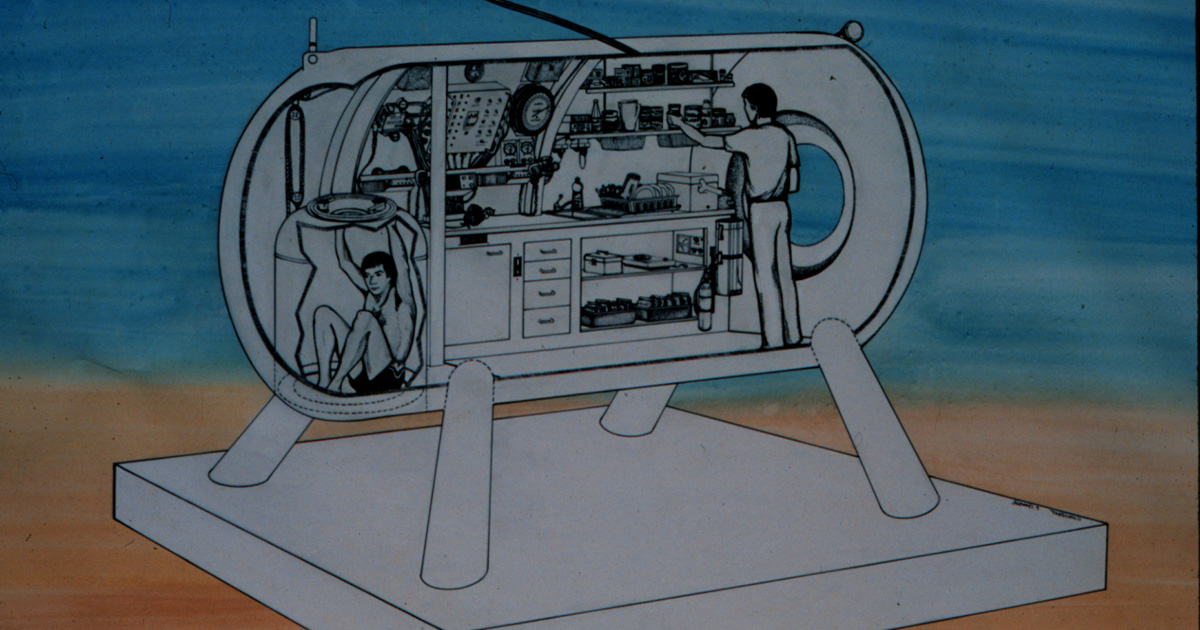In the early days of undersea research at NOAA, scientists needed to surface regularly when SCUBA diving to study coral reefs and other habitats. This slowed down their progress, making it difficult to conduct longer studies. All that changed with the introduction of the HYDROLAB.
What was the HYDROLAB?
The HYDROLAB was NOAA’s first undersea research habitat where aquanauts could live on the ocean floor for days or weeks at a time. It was used by NOAA and its partners from approximately 1970 to 1985, in which time it housed over 700 scientists on more than 85 missions. The HYDROLAB operated on the ocean floor in the Bahamas, then in St. Croix, in the U.S. Virgin Islands.
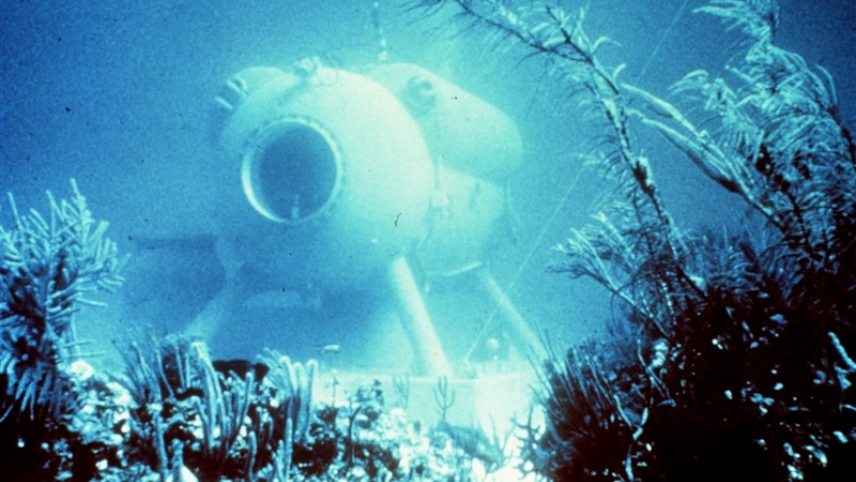 NOAA's HYDROLAB, based in the Caribbean beginning in the mid-70s, was an underwater lab for researchers.
NOAA's HYDROLAB, based in the Caribbean beginning in the mid-70s, was an underwater lab for researchers.
What does this have to do with corals?
The HYDROLAB made it easier to study coral reefs. The projects performed in the 1980s included studies of the life history and behavior of coral reef organisms, research on the chemical ecology and compatibility between the tissues of different sponges, and the development and testing of underwater fish marking and release techniques.
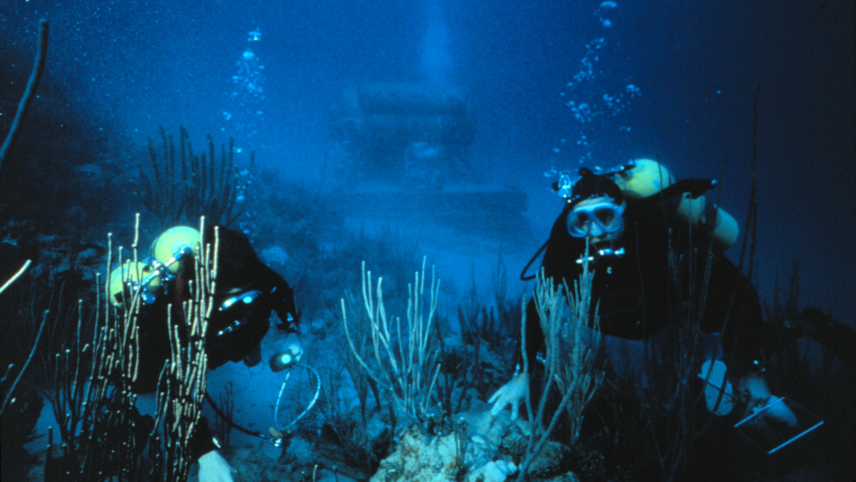 Two scientists in SCUBA gear float above a coral reef as they study it. The HYDROLAB sits in the background.
Two scientists in SCUBA gear float above a coral reef as they study it. The HYDROLAB sits in the background.
What was it like living in the HYDROLAB?
The HYDROLAB was very small, only 16 feet long and 8 feet in diameter - a little bigger than a mid-size car. In that space, it housed a lab, three bunks, and a moon pool, which allowed scientists to get in and out of the habitat while it was on the ocean floor. It had six viewports, electricity, running water, and heat. The HYDROLAB held four people, but since it only had three bunks, inhabitants had to rotate sleeping schedules.
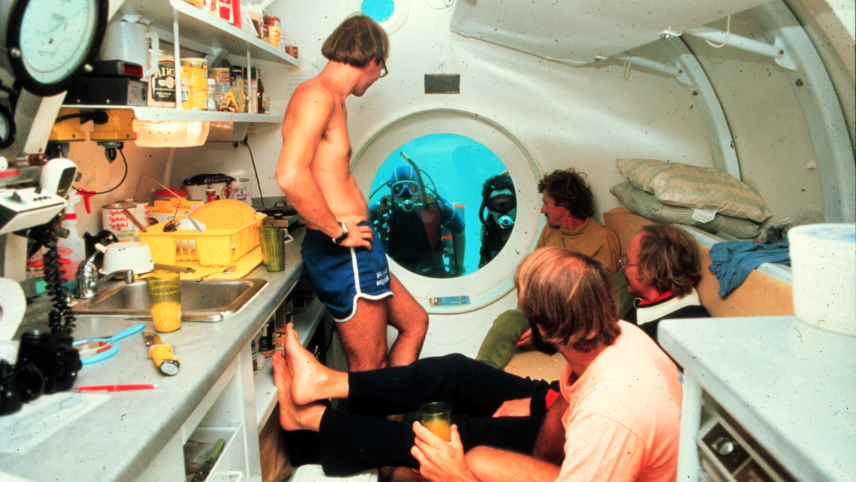 Four scientists inside the NOAA Hydrolab as it sits on the ocean floor, with two more scientists in SCUBA gear looking in through a window on the end of the structure.
Four scientists inside the NOAA Hydrolab as it sits on the ocean floor, with two more scientists in SCUBA gear looking in through a window on the end of the structure.
When it was time to leave the HYDROLAB, the inhabitants had to spend at least 16 hours in a hyperbaric chamber, so they wouldn’t get decompression sickness (known as “the bends”). This serious condition can lead to effects ranging from joint pain and rashes to paralysis and even death.
Where is the HYDROLAB now?
NOAA still has the HYDROLAB, but its undersea days are over. It was decommissioned in 1985 and replaced by the Aquarius for underwater research. The Aquarius is a more modern undersea dwelling and is currently the only one in the world being used for marine science. It resides in NOAA’s Florida Keys National Marine Sanctuary and is operated by the Florida International University.
The HYDROLAB is currently on display in the NOAA Science Center in Silver Spring, Maryland.
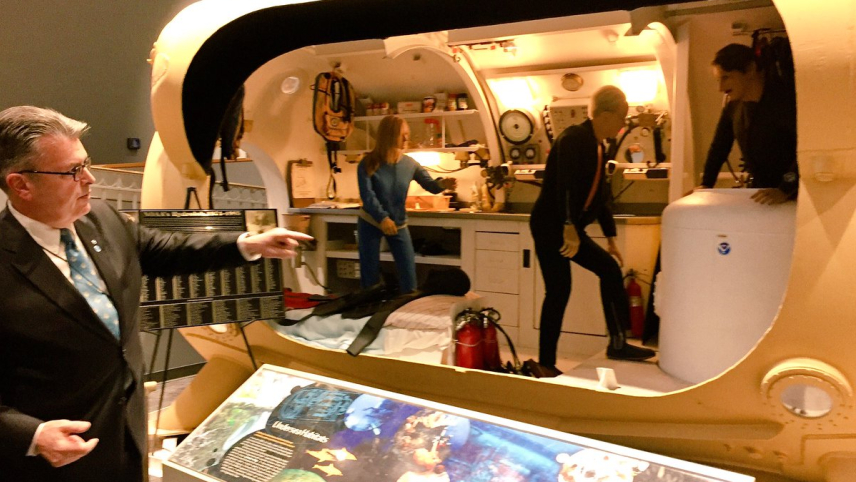 Former NOAA Research administrator Craig McLean points to the HYDROLAB, where three mannequins are staged as though they are working in the small lab it houses.
Former NOAA Research administrator Craig McLean points to the HYDROLAB, where three mannequins are staged as though they are working in the small lab it houses.


